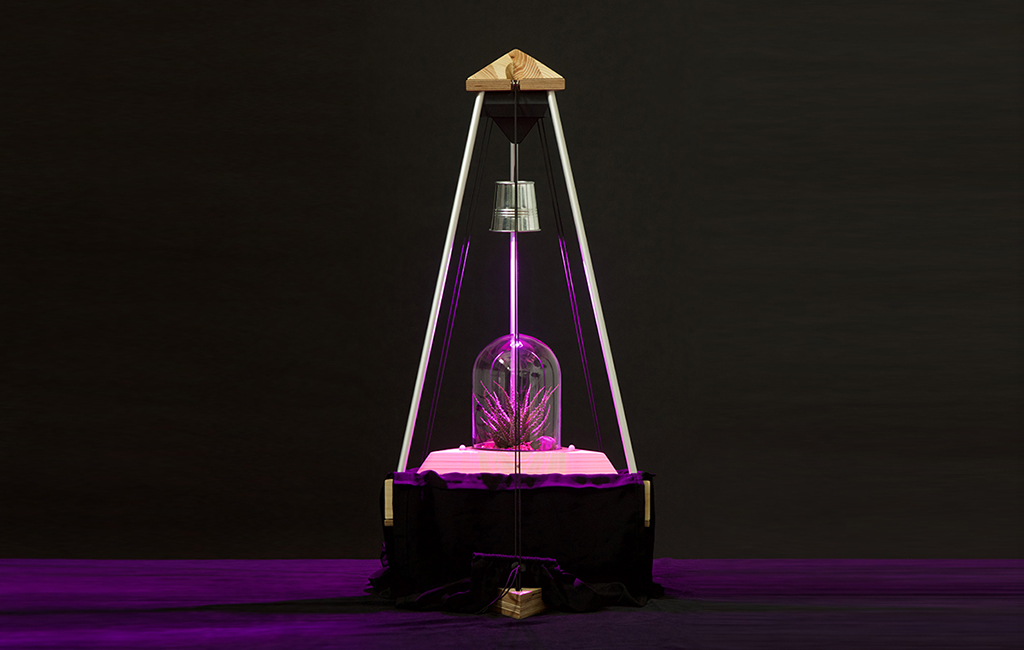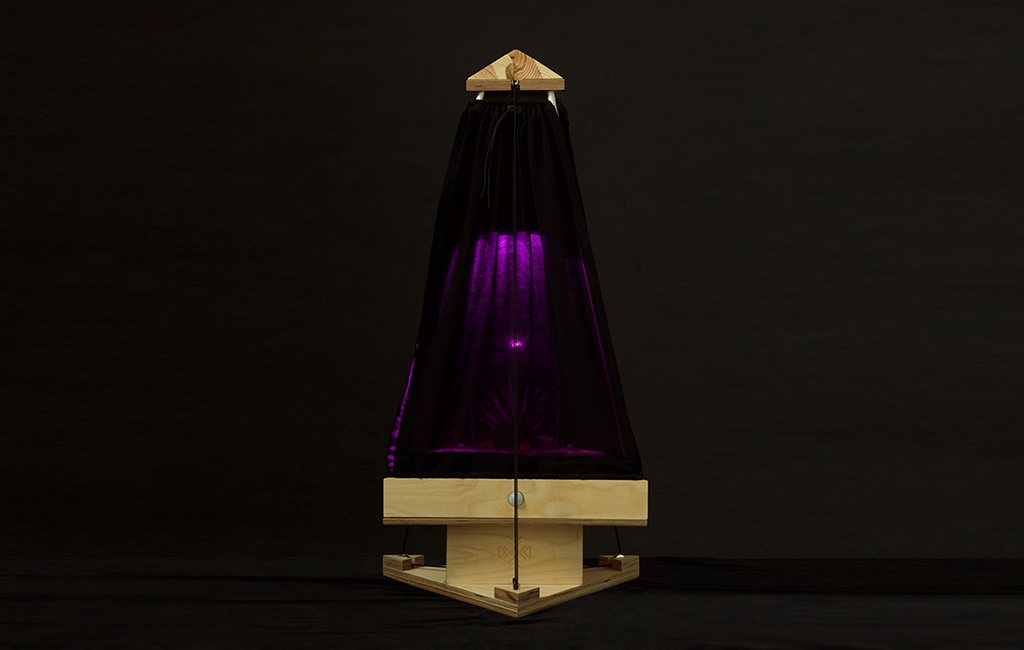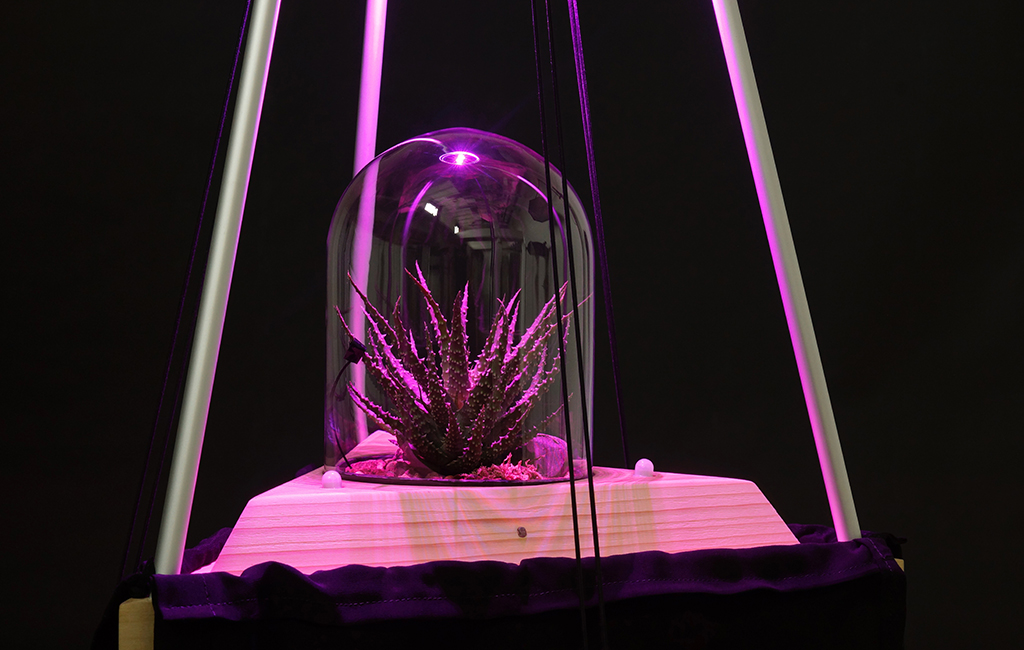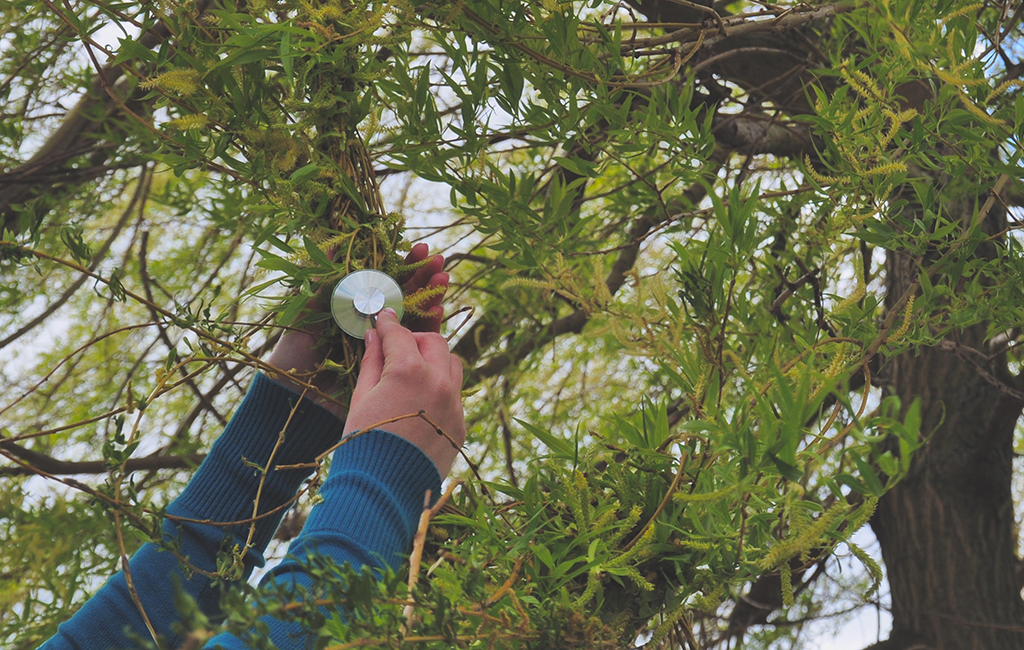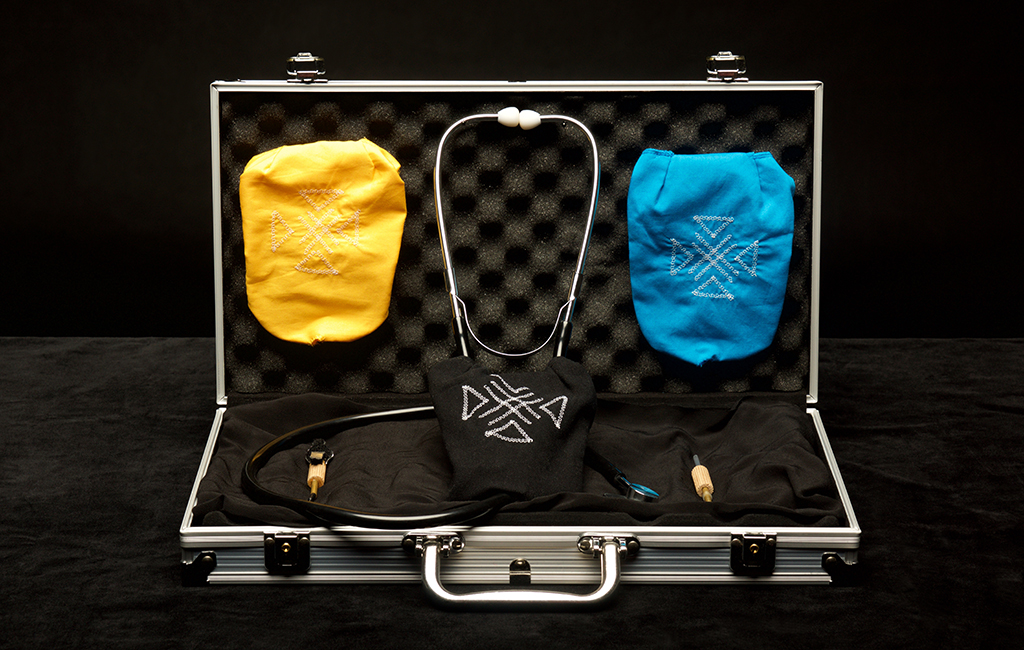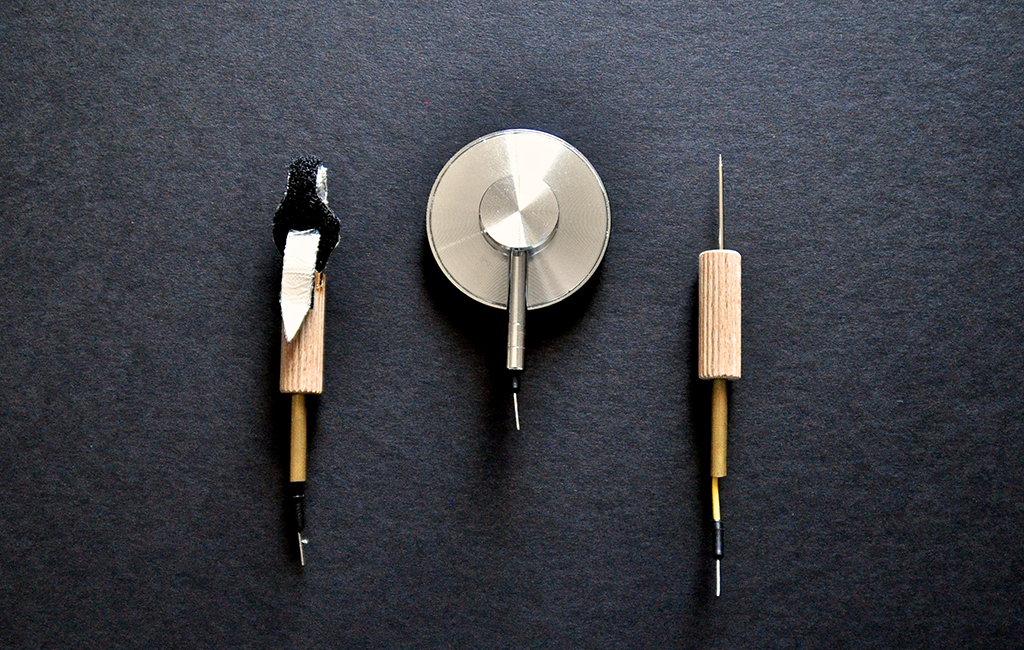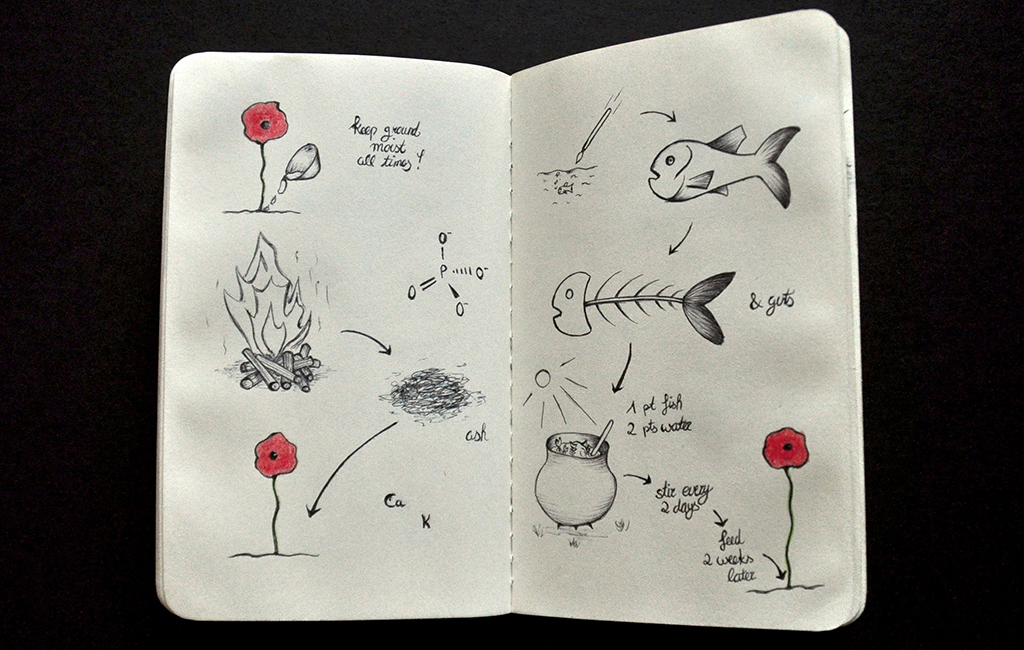Planterious
Master Project
In our everyday life, we tend to overlook plants. Too subtle, slow and complicated are their signals for us to understand or even notice them. If we do think about plants however, we are apt to not regard them as active beings but rather as passive objects that we have a name and a use for. This project tries to emphasize that plants are active living beings that are not only very aware of their surroundings, but also react to it in various ways and are therefore able to perform a form of individual choice and basic intelligence. The project shall inspire to question the way we regard and treat plants in our everyday life. On this account a series of three objects has been developed that communicate facts derived from a phase of extensive research in scientific, philosophic and art related fields as well as various experiments.
In the future described by this object, the poppy learned to grow sweet fruits filled with heroin. Attracting the human with its red color and its new ability to shine, it lures people closer and waits for them to taste the addictive fruits. Once hooked, the human starts to neglect their roles in society and only cares about the poppy plant, which is slowly rising to the rank of a sacred being. People no longer depend on other humans but on the poppy plant for its addictive fruits and will therefore make sure it has perfect conditions to grow, leading to a long and happy life for the wild poppy plant. The Glimpse consists of two artifacts from this obscure future: The first is a statue that has similarities to a totem, a sacred object used for the prayer to a being of the natural world. The second part is a notebook, a handmade documentation by a person living in this weird future.
Object #1:
The Plantoscope is a device for the observation of plant life. It looks and works similar to a stethoscope, a device usually used to observe an animal’s heartbeat. Since plants don’t have hearts and therefore no heartbeats to listen to, the front piece of the Plantoscope is turned into an electrode, which can be switched, depending on the user’s needs. The electrode is connected to a circuit located in a small pouch beneath the earpiece. There the data is collected, filtered and sonified, leading to specific sounds audible through the Plantoscope’s earpiece. Listening to the plant’s life offers a new kind of interaction between human and plant and shall lead to a better understanding and greater respect while encountering plants as independent beings.Object #2:
The Autonomous Plant is an independant urban plant. This object both questions our relationship to plants in urban space and explores whether plants inherit a form of own intentions and preferences. The Autonomous Plant lives inside a glass bulb, keeping water and nutrition close. Via a small electrode attached to the plants surface, it is connected to a precise circuit to measure the plant's signals and further to its own plant LED, allowing the plant to dim the light according to its needs. Thereby the plant becomes independent from the light situation in its environment. Additionally, motion sensors allow the plant to shut out human observers and wild animals as well as direct sunlight by closing the shutters surrounding the plant. By shutting out its observers, the Autonomous Plant refuses to play along with the human’s intention to use plants for decoration and both questions the human’s superiority to plants and mimics the common anonymity occurring in human cities.Object #3:
A Glimpse of a distant future, a speculation about the evolution and possible agenda of the poppy plant. Plants can create and manipulate human desires and actions by being beautiful, useful or providing drugs. The poppy plant combines all three keys of manipulating desires: It produces beautiful flowers, edible seeds and morphine, the basis for opium and heroin. How could the poppy plant use its manipulating potential – and what could it intend?In the future described by this object, the poppy learned to grow sweet fruits filled with heroin. Attracting the human with its red color and its new ability to shine, it lures people closer and waits for them to taste the addictive fruits. Once hooked, the human starts to neglect their roles in society and only cares about the poppy plant, which is slowly rising to the rank of a sacred being. People no longer depend on other humans but on the poppy plant for its addictive fruits and will therefore make sure it has perfect conditions to grow, leading to a long and happy life for the wild poppy plant. The Glimpse consists of two artifacts from this obscure future: The first is a statue that has similarities to a totem, a sacred object used for the prayer to a being of the natural world. The second part is a notebook, a handmade documentation by a person living in this weird future.
You can also find this project on: and digitalmedia-bremen.de.
Info
